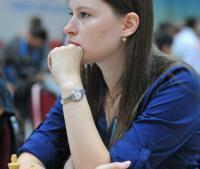
Creative Thinking
Chess theory is based on general principles, regularities, notions. They help us improve our chess understanding and become better players. However, following general principles religiously, without taking into account the features of each particular position, can be harmful. Apart from logic, chess has a different side, which seems to be irrational at first glance, but also has its ground. I mean moves that don’t fit the conventional rules. For example, a knight willingly gets placed on the rim of the board, the king – stuck in the middle of the board in the middlegame, an untypical sacrifice occurs, etc. Feeling when to follow rules, and when to break them, makes a master.
Dr. Tarrasch received a letter from an angry reader who claimed that “you wrote that we should place rooks behind passed pawns in the endgame. I followed your stupid advice and lost!”. In his next column Tarrasch commented on this ironically: “Here is the new rule. You should always place your rook behind passed pawns in the endgame, except for the situations when it doesn’t make sense”.
A typical example of a non-standard method of thinking is making an intermediate move instead of a recapture or moving a piece away. For instance, first give a check, and only then recapture. This trick is often missed by one or both of the players since it seems to break the standard pattern of calculating lines. The main ideas behind intermediate moves are: improve the position of one’s pieces, gain a tempo, put an end to your opponent’s combination. Intermediate moves are especially dangerous in long forced lines since it’s very easy to miss them when calculating a few moves ahead. Therefore, you should always stay alert when pondering seemingly forced lines. Ask yourself: is it really so? Or are any deviations possible?
A fresh example from the Candidates Matches:
Another type of unconventional moves is the so-called “irrational” moves; moves that contradict the general principles. To find such moves one should understand the position deeply and be able to take an unbiased look at it. Planning and prophylactic thinking may come to one’s aid here. If you study carefully the position, your ideas and your opponent’s plans, you are more likely to spot something new.
One more example of non-standard moves is sacrifices that lead to material imbalances. We have discussed these in previous articles at Chess.com. If your thinking is rigid (e.g. based on conventional value of the pieces), you are likely to miss such opportunities.
To sum it all up, rules (principles, regularities, etc.) have two roles. On the one hand, they help us find plans and moves. If you have a certain level & experience in chess, you can save time and make a standard move quickly. On the other hand, if you adhere to stereotypes, you might miss lots of valuable chances. Your task is to get a deep understanding of the current position, while keeping in mind that time is limited. This will help you find unexpected and very strong moves, as well as eventually win the game.
One of the ways of extending your notion of how one can play chess is to study games of creative chess players who like to improvise, e.g. Aronian or Morozevich. Don’t forget to solve chess compositions and play training games in non-standard positions (those can be found in special books or software). The less dogmatic and more creative your chess thinking is, the higher the chances of finding the right approach to the position and surprising your opponent.
The following game of mine was played vs WGM Inna Gaponenko at the recent Russian Team Chess Championship:
After mixing up moves in the opening, I still got a double-edged position. Instead of playing f5 at the right moment, I played a standard move 0-0-0 and could have fallen into a worse position. At move 19 I chose the wrong move order, but Inna returned the favor and captured on f6. Meanwhile, after Nh6 she would have got a better position. Later on she also had chances to fight for an advantage, but missed them, and the game ended in a draw.






